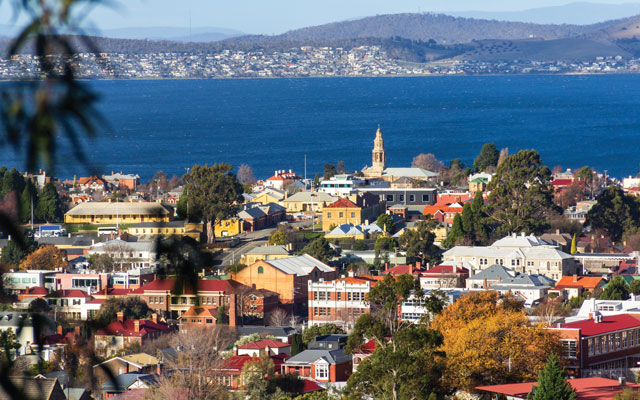Tasmania is evolving as a preferred destination for travellers seeking nature, culture, a slower pace, and unique wellness experiences amid growing international interest
If slowing down is the new luxury, Tasmania may be Australia’s best-kept secret. The air is crisp, the food hearty, and mobile phones often lose signal – which is the point. For Asians prioritising off-the-beaten-path travel, Tasmania offers a quiet appeal.
“I’ve watched it develop from a struggling industry to a blossoming one,” said Annabelle Sweetman, a 20-year Tasmanian tourism veteran and guide. “We used to be seen as a bit backward, but Tourism Tasmania has done a lot of work, so now we’ve grown up. Operators are working together to combine experiences, products are maturing, and people are really proud.”

Many who have watched tourism here blossom point to the “MONA effect” for its beginnings, referring to the debut of the Museum of Old and New Art 14 years ago, drawing global attention for its curious and edgy exhibitions.
“People were coming just for the weekend and the airlines were seeing more demand,” said Sweetman, also noting that tourism has surpassed forestry as Tasmania’s leading industry.
For the record, the island welcomed 254,000 international visitors in 2024, a 24.8 per cent increase from 2023, with visitor spending rising 47.7 per cent. Compared to pre-Covid numbers, recovery is almost complete, with mixed performance from various markets.
About 20 per cent of international visitors come from Asia, with significant traffic from Singapore and Hong Kong, while the key China market is being encouraged to return and India emerges as a market to watch.
“The Asian market not only plays a very strong role in year-round visitation for us, but also a strong role in spending. We try really hard to make sure that the visitors we’re attracting to Tasmania are an audience who will understand what we offer but also respect our place,” said Lindene Cleary, chief marketing officer of Tourism Tasmania.
The tourism bureau promotes its offer around six key pillars: F&B, nature and wildlife, experiences, history and heritage, positive impact, and culture and creativity. It is also keen to show that it has just as much to offer in the winter season, if not more.
“There are a lot of events and festivals that are very creative and different to what you’d find anywhere else across our seasons but particularly in wintertime,” she said, in addition to whisky tastings and more aurora sighting opportunities due to longer nights.
She also noted the rise in hot and cold therapy experiences “all over Tasmania”. These include saunas on the beach, seconds from the cold plunge of the ocean, or saunas on a boat 20 minutes from Hobart, from where one can dive straight into the cold river water.
“That’s an interesting trend in Tasmania because we’re not seen as a typical wellness destination in terms of day spas and the traditional definition of wellness, but our version of wellness is more about taking time or pausing,” said Cleary.
Regardless of how wellness tourism is defined, the trend aligns with Tasmania’s immersive landscape, where unique wildlife thrives and geographic isolation helps preserve its pristine environment.
Visions of campfire meals also lend to masterful storytelling in Tasmanian tourism, from its defining history of convict settlement tangling with Aboriginal resistance to the 114 luxury rooms in MACq 01 hotel, each of which identifies with a local historical character.
Tasmania is also the kind of place that inspires the self-driving tourist, with itineraries that can be co-designed from scratch.
“We suggest that you plan at least five to seven days, and you can travel from Hobart, along the East Coast, Maria Island, Freycinet, Launceston, and possibly up to Cradle Mountain,” said Daniel Schoedler, owner and managing director of Premier Travel Adventures Tasmania.
“If you have 10 days, that’s even better, because you don’t have to change hotels every night. You can explore more of this seafood capital of Australia and spend time stargazing, which is a tour that’s really popular with the Asian market as we have several enquiries daily,” he added.
The luxury accommodation scene is also evolving. In addition to the premium but intimate old-world charm that properties like Islington Hotel offer, newer entrants such as The Tasman (named in the world’s top 50 hotels), Mövenpick, and Crowne Plaza are expanding Tasmania’s higher-end proposition.
“We used to have a waitlist for our rooms and now have to compete more, but that’s good. It keeps standards up,” said Karen Ann, general manager of Islington Hotel.
“I’m still in awe. There’s just such a huge variety for visitors… the outdoors, clean air, beautiful sightseeing, and restaurants that are to die for. Tasmanians really know how to look after their guests, who love the laid-back approach. Every guest has said to me, ‘I wish we had more time’,” she added.
If most visitors leave wishing they had stayed longer, the tip for tourists is evident – give yourself the time. And don’t say we didn’t tell you so.











